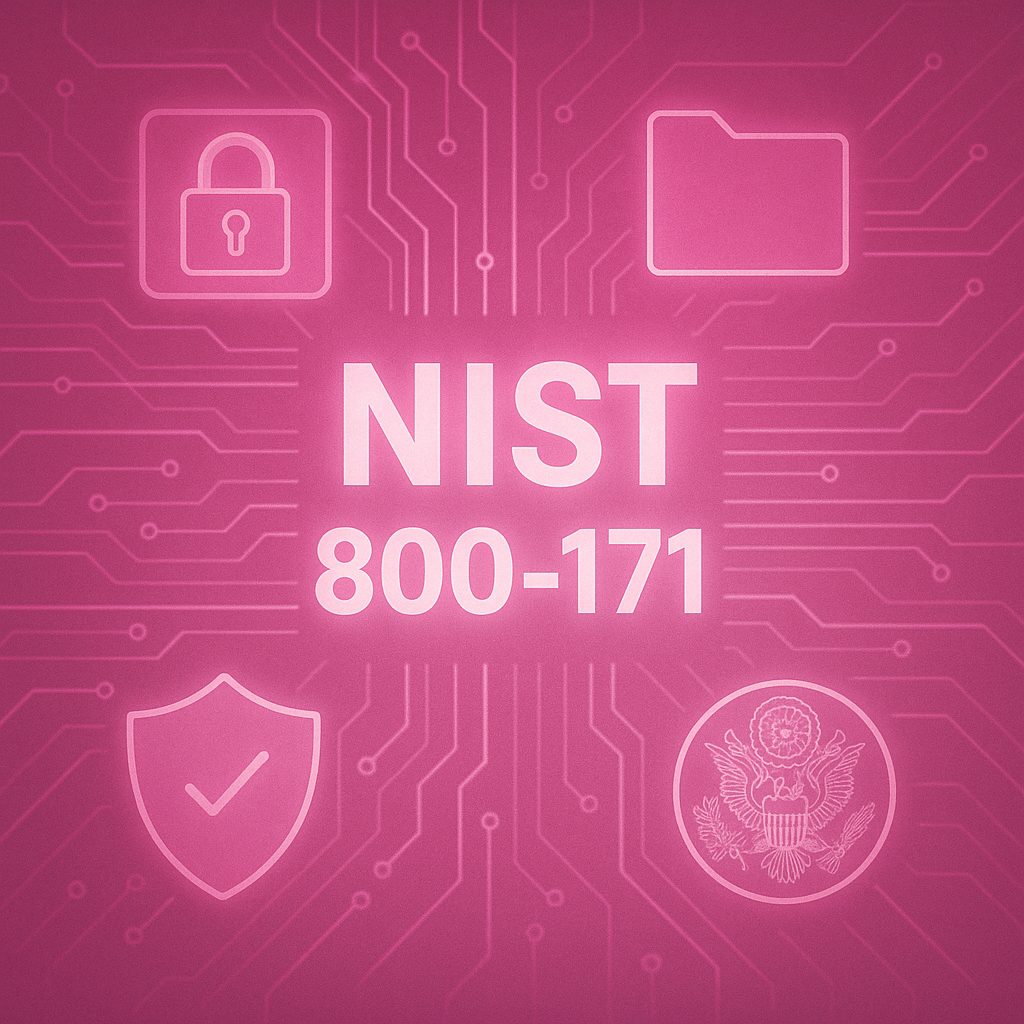In the world of cybersecurity frameworks, NIST 800-171 punches above its weight. Originally designed to help federal contractors protect Controlled Unclassified Information (CUI), it has since become the go-to benchmark for any organization handling sensitive data outside government systems. Whether you’re a defense contractor, a healthcare vendor, or just a SaaS company working with federal clients, NIST 800-171 is not optional—it’s essential.
And if you think it’s only about ticking compliance boxes, think again. NIST 800-171 is how you operationalize trust in supply chains, cloud environments, and hybrid architectures. It defines how you protect data—at rest, in motion, and in use—without overengineering your infrastructure.
NIST 800-171 at a Glance: What It Covers
NIST 800-171 outlines 110 security requirements grouped into 14 families, including:
- Access Control
- Incident Response
- Media Protection
- System and Communications Protection
- Configuration Management
Its focus? Protecting CUI in non-federal systems—that is, data that’s not classified, but still sensitive and legally protected.
Each requirement is written for real-world implementation, with enough flexibility to map to modern tech stacks: VDI, MFT, SASE, Layer 3 ACL, and even Zero Trust architectures powered by Agent-Based Microsegmentation.
How NIST 800-171 Differs from NIST 800-53 and NIST 800-57
While many confuse the NIST frameworks, each serves a different function:
Framework | Purpose | Key Use Case |
NIST 800-171 | Protect CUI in non-federal systems | DoD contractors, third-party vendors |
NIST 800-53 | Define a complete security and privacy control set | U.S. federal systems, high-risk enterprise |
NIST 800-57 | Guide cryptographic key management | Organizations handling encrypted sensitive data |
🔍 Quick distinction: 800-171 pulls a tailored subset of controls from 800-53, designed to be more focused and practical for external parties.
Meanwhile, 800-57 complements them both by defining how encryption keys must be managed across the system.
Together, they form a compliance triangle:
800-53 for the full control catalog,
800-171 for applying those controls to CUI,
and 800-57 to secure cryptographic elements throughout.
The Role of NIST 800-171 in Modern Security Architectures
Let’s say you’re running a multi-cloud environment secured with SASE, or supporting remote federal users via VDI. You’ve got hybrid workloads, encrypted MFT solutions, and granular access rules via Layer 3 ACLs or identity-based segmentation. Where does 800-171 fit in?
Everywhere.
It mandates:
- Access control to data and systems (AC-2, AC-17)
- Audit trails for forensic integrity (AU-2, AU-6)
- Encryption policies aligned with NIST 800-57 (SC-12 to SC-13)
- Boundary defense which maps perfectly to modern SASE and Zero Trust strategies
If you’re using Agent-Based Microsegmentation, you’re already fulfilling parts of the “System and Communications Protection” family—like SC-7 (boundary protection) and SC-32 (information system partitioning).
Mapping Key Controls to Real Tech: From Theory to Action
Here’s how some of the most cited NIST 800-171 controls translate to practical implementations:
Control ID | What It Requires | Example Implementation |
AC-3 | Enforce least privilege | Role-based access with SSO and MFA |
SC-12/SC-13 | Encrypt CUI in transit and at rest | AES-256 via MFT and TLS 1.2+ for email |
MP-5 | Protect media during transport | Secure file vaults, digital vaulting |
SC-7 | Monitor and control communications at boundaries | SASE, Layer 3 ACL, Agent-Based Microsegmentation |
AU-6 | Regular audit review and response | SIEM systems with alerting and behavioral baselines |
NIST 800-171 and Zero Trust: They’re Not Mutually Exclusive
Although 800-171 doesn’t explicitly mention Zero Trust, it was built on the same foundational ideas:
- Least privilege access
- Strong identity validation
- Continuous monitoring
- Segmentation and isolation
Implementing Zero Trust with NIST 800-171 is not only possible—it’s synergistic. Use Agent-Based Microsegmentation to enforce isolation, SASE to control remote access, and centralized logging to support 24/7 monitoring. NIST won’t tell you to go Zero Trust—but it’ll reward you if you do.
Common Challenges—and How Smart Teams Overcome Them
Challenge | How to Solve |
Legacy systems with no agent support | Use passive monitoring or wrap them with Layer 3 ACLs |
Lack of centralized identity management | Deploy federated SSO + MFA across VDI & SaaS apps |
Audit overload | Automate log parsing and reporting via your SIEM |
Crypto key mismanagement | Align with NIST 800-57, use HSM or KMS for key lifecycle control |
Many organizations fail NIST 800-171 audits not because of bad security—but because of poor documentation. Control is only half the game—evidence and attestation are the other half.
Continuous Monitoring and Automation with 800-171
In fast-moving environments, static policies are a liability. To stay compliant and secure, you need to:
- Automate enforcement via CI/CD (e.g., tagging prod assets for 800-171 coverage)
- Use telemetry from MFT logs, agent data, and SASE analytics
- Run weekly anomaly reports on access to sensitive VDI zones
- Apply identity-based triggers to detect abuse of Layer 3 ACL rules
NIST 800-171 doesn’t tell you how to do this. That’s your job. But the standard pushes you to think in terms of continuous validation—not annual assessments.
Tracking Progress: KPIs That Show You’re Getting It Right
KPI | What It Shows |
% of workloads with validated encryption | Compliance with SC-12 and SC-13 |
Mean Time to Detect unauthorized access | Efficacy of AU-6 & IR-4 |
% of systems covered by audit logs | Scope of AU-2/AU-3 |
# of exceptions in least-privilege access | Drift from AC-3 policy baseline |
Track them. Report them. Improve them.
Final Thoughts: NIST 800-171 Isn’t Just About Compliance—It’s About Trust
In 2025, the government doesn’t just want vendors with firewalls. It wants partners that can prove their systems are hardened. That’s what NIST 800-171 does. It helps you build a security program that can scale, adapt, and survive a breach.
And when you combine it with NIST 800-53 for broader controls, NIST 800-57 for crypto hygiene, and technologies like SASE, MFT, VDI, and Agent-Based Microsegmentation—you don’t just pass an audit. You build credibility.





